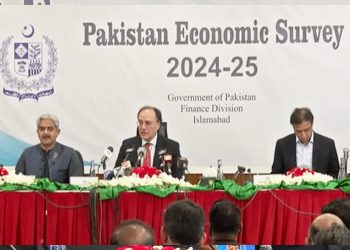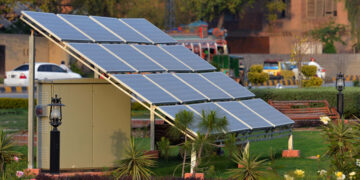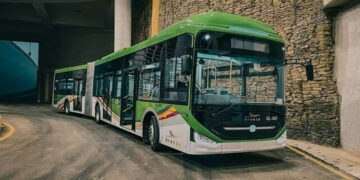The rehabilitation and expansion of stormwater drains have not commenced so far. There are 550 drains in the city including 27 stormwater drains. Despite the passage of four months since the end of the rainfall season, construction work has started on just three drains to hoodwink the Supreme Court. Karachi is at greater risk of being flooded once again next years when the monsoon arrives.
The encroachments along the banks of these stormwater drains are the biggest reason for the city’s sinking. These encroachments were formed by political patronage in different eras but it’s the city that suffers the most. This has narrowed the breadth of stormwater drains and a cleanup operation remains an arduous task as there is no access left for heavy machinery to enter these drains.
Gujjar Nullah is the biggest and longest stormwater drain in Karachi stretching for 12 kilometres. This is followed by Orangi Nullah which is 10 km long while the third-longest is the Mehmoodabad Nullah with a length of eight kilometres. These drains pass right through the city centre but inept officers within the Karachi Water and Sewerage Board (KWSB) have turned stormwater drains into sewerage lines as all excrements and waste is dumped into them.
These drains are already choked with garbage and the situation worsens when it rains as the water overflows on the roads, streets and enters our homes. This was the situation we witnessed this year when heavy monsoons lashed Karachi. The city was a mess of epic proportions as all roads were inundated with smelly rainwater, making our lives even more miserable.
Many people lost their lives either by drowning or other rain-related incidents. The prime minister and army chief rushed to inspect the situation and assured us that the city would be transformed within three years. In the first phase, stormwater drains will be rehabilitated and the National Disaster Management Authority (NDMA) was sent to Karachi to overview the situation.
NDMA cleaned up these drains swiftly but the rainfall season was over. Now it has been three months since monsoon ended and the NDMA nor the government of Sindh seems to have any concrete strategy or initiative, raising concerning among citizens that they may face the ordeal once again.
Eventually, an operation was launched against encroachments which proved to be merely an eyewash to appease the apex court and yielded no results.
Still, federal institutes, Sindh government, district authorities and others are scratching their heads but have failed to come with any plan to rehabilitate and expand the drains, strengthen embankments and build roads around them. At such a slow pace, it may take a year just to remove the encroachments and even longer for the rest of the proposed initiatives.
Since the last twenty years, these encroachments have removed the markings on stormwater drains. These stand as proof of the government’s incompetence and political parties use it against their opponents and create obstacles in their development. As long as political patronage continues, these illegal encroachments will never be removed as parties are the ones who instigate these protests and demonstrations. It is imperative that authorities get serious and come up with a concrete plan to solve these problems.






























